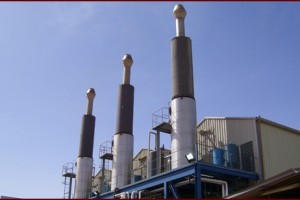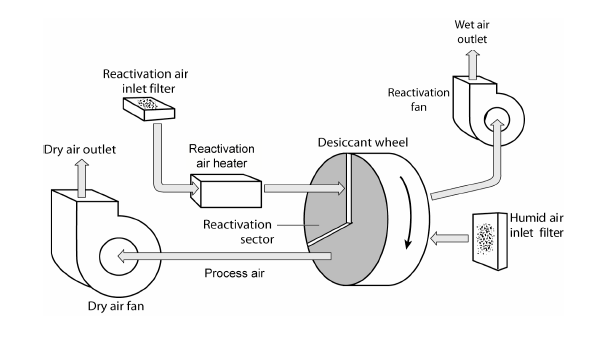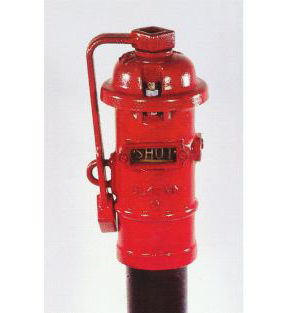API Pump Design Standards
American Petroleum Institute (API) has specified following pump design standards for different kinds of pumps.
ANSI/API Std 610 - Centrifugal Pumps for Petroleum, Petrochemical and Natural Gas Industries
Std 610/ISO 13709:2009
Specifies requirements for centrifugal pumps, including pumps running in reverse as hydraulic power recovery turbines, for use in petroleum, petrochemical, and gas industry process services. This International Standard is applicable to overhung pumps, between bearings pumps, and vertically suspended pumps. Clause 9 provides requirements applicable to specific types of pumps. All other clauses of this International Standard apply to all pump types. Illustrations are provided of the various specific pump types and the designations assigned to each specific pump type. It does not cover sealless pumps.
API Std 685 - Sealless Centrifugal Pumps for Petroleum, Petrochemical, and Gas Industry Process Service
Specifies the minimum requirements for sealless centrifugal pumps for use in petroleum, heavy duty petrochemical and gas industry services. This standard is applicable to single stage overhung pumps of two classifications: magnetic drive pumps and canned motor pumps.
API Std 674 - Positive Displacement Pumps—Reciprocating
Covers the minimum requirements for reciprocating positive displacement pumps and pump units for use in the petroleum, petrochemical, and gas industry services. Both direct-acting and power-frame types are included. Controlled-volume pumps, hydraulically driven pumps, and rotary pumps are not included.
API Std 675 - Positive Displacement Pumps—Controlled Volume for Petroleum, Chemical, and Gas Industry Services
Covers the minimum requirements for reciprocating, controlled volume pumps, and pump units for use in the petroleum, petrochemical, and gas industry services. These pumps are either hydraulic diaphragm or packed plunger design. Rotary positive displacement pumps are not included. Diaphragm pumps that use direct mechanical actuation are also excluded.
API Std 676 Positive Displacement Pumps—Rotary
Covers the minimum requirements for rotary positive displacement process pumps and pump units for use in the petroleum, petrochemical, and gas industry services. Controlled-volume pumps, hydraulically driven pumps, and
positive displacement reciprocating pumps are not included.
API Std 681 - Liquid Ring Vacuum Pumps and Compressors for Petroleum, Chemical, and Gas Industry Services
Defines the minimum requirements for the basic design, inspection, testing, and preparation for shipment of liquid ring vacuum pump and compressor systems for service in the petroleum, chemical, and gas industries. It includes both vacuum pump and compressor design and system design.
API Std 682 - Pumps—Shaft Sealing Systems for Centrifugal and Rotary Pumps
Specifies requirements and gives recommendations for sealing systems for centrifugal and rotary pumps used in the petroleum, natural gas, and chemical industries. It is applicable mainly for hazardous, flammable, and/or toxic services where a greater degree of reliability is required for the improvement of equipment availability and the reduction of both emissions to the atmosphere and life-cycle sealing costs.
ASME design standards for pumps
There are more standards and guidelines provided by American Society of Mechanical Engineers (ASME) for pump design, maintenance and operations - for different kinds of pumps used in different kinds of processes.
Centrifugal Pumps (PTC 8.2 - 1990)
This Code provides directions for conducting and reporting performance tests of centrifugal pumps, including those of the mixed flow and axial flow types, under the following characteristics: (a) Total head produced by the pump; (b) Pump capacity (rate of flow through the pump); (c) Power input to the pump; (d) Efficiency; and (e) Net positive suction head requirements of the pump.
Specification for Vertical In-Line Centrifugal Pumps for Chemical Process (B73.2 - 2016)
This Standard is a design and specification standard that covers metallic centrifugal pumps of vertical shaft single-stage design with suction and discharge nozzles in-line. This Standard includes dimensional interchangeability requirements and certain design features to facilitate installation and maintenance and enhance reliability and safety of B73.2 pumps. It is the intent of this Standard that pumps of the same standard dimension designation from all sources of supply shall be interchangeable with respect to mounting dimensions, size, and location of suction and discharge nozzles. Maintenance and operation requirements are not included in this Standard.
Specification for Sealless Horizontal End Suction Centrifugal Pumps for Chemical Process (B73.3 - 2015)
This Standard is a design and specification standard that covers metallic and plastic lined sealless centrifugal pumps of horizontal, end suction single stage, centerline discharge design. This Standard includes dimensional interchangeability requirements and certain design features to facilitate installation and maintenance and enhance reliability and safety of B73.3 pumps. It is the intent of this Standard that pumps of the same standard dimension designation from all sources of supply shall be interchangeable with respect to mounting dimensions, size, and location of suction and discharge nozzles, input shafts, baseplates, and foundation bolt holes.
Pump System Energy Assessment (ISO/ASME 14414 - 2015)
This International Standard sets the requirements for conducting and reporting the results of a pumping system energy assessment (hereafter referenced as “assessment”) that considers the entire pumping system, from energy inputs to the work performed as the result of these inputs. The objective of a pumping system energy assessment is to determine the current energy consumption of an existing system and identify ways to improve system efficiency.
Specification for Horizontal End Suction Centrifugal Pumps for Chemical Process (B73.1 - 2012)
This Standard is a design and specification standard that covers metallic and solid polymer centrifugal pumps of horizontal, end suction single stage, centerline discharge design. This Standard includes dimensional interchangeability requirements and certain design features to facilitate installation and maintenance and to enhance reliability and safety of B73.1 pumps.
Hydraulic Turbines and Pump-Turbines (PTC 18 - 2011)
PTC 18-2011 applies to all sizes and types of hydraulic turbines or pump-turbines. It defines methods for ascertaining performance by measuring flow rate (discharge), head, and power, from which efficiency may be determined. Requirements are included for pretest arrangements, types of instrumentation, methods of measurement, testing procedures, methods of calculation, and contents of test reports.
Guidance for ASME EA-2, Energy Assessment for Pumping Systems [ANSI designation: ASME TR EA-2G-2010] (EA-2G - 2010)
This guidance document provides an application guide on how to utilize ASME EA-2, Energy Assessment for Pumping Systems.
Energy Assessment for Pumping Systems (EA-2 - 2009)
This Standard covers pumping systems, which are defined as one or more pumps and those interacting or interrelating elements that together accomplish the desired work of moving a fluid. A pumping system thus generally includes pump(s), driver, drives, distribution piping, valves, sealing systems, controls, instrumentation, and end use equipment such as heat exchangers, for example. This standard addresses open and closed loop pumping systems typically used in industry, and is also applicable to other applications.
Thermoplastic/Thermoset Polymer Material Horizontal End Suction Centrifugal Pumps Chemical Process (B73.5M - 1995)
Establishes the requirements for preservice and inservice testing and examination of certain components to assess their operational readiness in light-water reactor power plants. It identifies the components subject to test or examination, responsibilities, methods, intervals, parameters to be measured and evaluated, criteria for evaluating the results, corrective action, personnel qualification, and record keeping. These requirements apply to: (a) pumps and valves that are required to perform a specific function in shutting down a reactor to the safe shutdown condition, in maintaining the safe shutdown condition, or in mitigating the consequences of an accident; (b) pressure relief devices that protect systems or portions of systems that perform one or more of these three functions; and (c) dynamic restraints (snubbers) used in systems that perform one or more of these three functions.
Displacement Compressors, Vacuum Pumps And Blowers (PTC 9 - 1970)
The purpose of this Code is to establish rules for conducting tests of displacement compressors, vacuum pumps and blowers to determine the following: (a) Capacity in relation to speed, inlet pressure, and discharge pressure. (b) Power consumption in relation to speed, capacity, inlet pressure, and intercooling. In addition, the Code provides rules for adjusting the test results to reconcile them with specified operating conditions.




